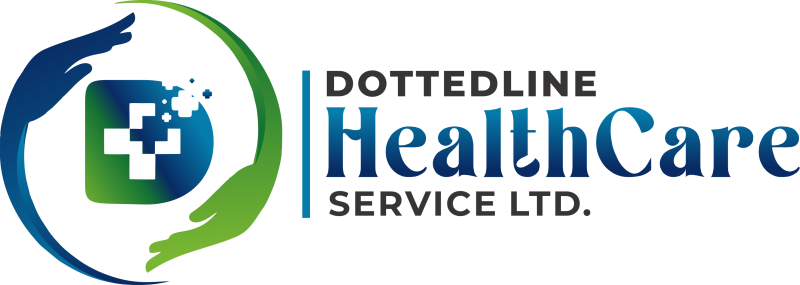Benefits of AED & CPR Training
CPR and AED training is a crucial skill that can make a significant impact on individual and community health. With the increasing problem of cardiac conditions around the world, it’s essential for individuals and organizations to be prepared and equipped to respond in emergency cardiac situations.
Please find below the numerous benefits of CPR and AED training for individuals, corporate organizations, schools, hospitals, and communities.
For individuals, CPR and AED training can provide peace of mind and the confidence to respond in emergency situations. By learning CPR and AED use, individuals can be better equipped to provide lifesaving care in the event of a cardiac emergency, before professional medical help arrives. This can greatly improve outcomes and increase the chances of survival for patients. Additionally, CPR and AED training can be a valuable skill to have in one’s personal and professional life, and can be used to help friends, family, and colleagues in need.
For organizations, the benefits of CPR and AED training can be even greater. Hospitals and other healthcare organizations can improve patient safety and increase the chances of survival for patients experiencing cardiac arrest. Schools and other educational institutions can improve the safety of students and staff. And, businesses and other organizations can improve workplace safety and reduce the risk of workplace injuries. In addition, organizations that provide CPR and AED training can demonstrate their commitment to safety and health, and can help create a culture of preparedness and safety in the workplace and community.
-
Increased employee safety: By providing CPR and AED training to employees, organizations can increase the safety of their workforce and give them the skills to respond quickly and effectively in emergency situations.
-
Legal compliance: Many organizations are required by law to have employees trained in CPR and AED use. By providing this training, organizations can ensure compliance with regulations and avoid potential legal issues.
-
Improved company reputation: Organizations that prioritize employee safety and well-being can improve their reputation and attract top talent.
-
Reduced costs: By providing CPR and AED training, organizations can reduce the costs associated with medical emergencies and absenteeism.
-
Increased productivity: CPR and AED training can help organizations to minimize disruptions caused by medical emergencies and increase employee productivity.
-
Better preparedness: CPR and AED training can help organizations be better prepared for emergency situations and minimize the impact of a cardiac arrest event.
-
Better community engagement: Organizations with trained employees in CPR and AED can participate in community health awareness campaigns and outreach, which can boost community engagement and create a positive image for the organization
-
Employee empowerment: Training employees in CPR and AED use empowers them to take action in an emergency, which can increase their confidence and motivation in their work.
-
Better teamwork: By providing CPR and AED training to employees, organizations can foster teamwork and collaboration among colleagues.
-
Peace of mind: By providing CPR and AED training to employees, organizations can give them the knowledge and skills they need to save lives, which can provide peace of mind for both employees and management.
-
Student Safety: By providing CPR and AED training to school staff and students, schools can increase the safety of their students and give them the skills to respond quickly and effectively in emergency situations.
-
Legal Compliance: Some schools may be required by law to have staff trained in CPR and AED use. By providing this training, schools can ensure compliance with regulations and avoid potential legal issues.
-
Improved School Reputation: Schools that prioritize student safety and well-being can improve their reputation and attract top students and staff.
-
Reduced costs: By providing CPR and AED training, schools can reduce the costs associated with medical emergencies and absenteeism.
-
Increased Productivity: CPR and AED training can help schools minimize disruptions caused by medical emergencies and increase student productivity.
-
Better Preparedness: CPR and AED training can help schools be better prepared for emergency situations and minimize the impact of a cardiac arrest event.
-
Enhanced Life Skills: By providing CPR and AED training to students, schools can help enhance their life skills and prepare them for real-world emergencies.
-
Student Empowerment: Training students in CPR and AED use empowers them to take action in an emergency, which can increase their confidence and motivation in their academic pursuits.
-
Teamwork and Collaboration: By providing CPR and AED training to students, schools can foster teamwork and collaboration among classmates.
-
Peace of Mind: By providing CPR and AED training to students, schools can give them the knowledge and skills they need to save lives, which can provide peace of mind for both students, staff, and parents.
-
Patient Safety: By providing CPR and AED training to hospital staff, hospitals can increase the safety of their patients and give staff the skills to respond quickly and effectively in emergency situations.
-
Legal Compliance: Some hospitals may be required by law to have staff trained in CPR and AED use. By providing this training, hospitals can ensure compliance with regulations and avoid potential legal issues.
-
Improved Reputation: Hospitals that prioritize patient safety and well-being can improve their reputation and attract top staff and patients.
-
Increased Survival Rates: By providing CPR and AED training to hospital staff, hospitals can increase the chances of survival for patients experiencing cardiac arrest.
-
Improved Emergency Response: CPR and AED training can help hospitals be better prepared for emergency situations and improve the response times of staff in emergency situations.
-
Enhanced Clinical Skills: By providing CPR and AED training to hospital staff, hospitals can help enhance their clinical skills and improve the quality of care for patients.
-
Reduced Costs: By providing CPR and AED training, hospitals can reduce the costs associated with medical emergencies and improve overall efficiency.
-
Improved Teamwork: By providing CPR and AED training to hospital staff, hospitals can foster teamwork and collaboration among colleagues.
-
Enhanced Workplace Safety: Training hospital staff in CPR and AED use can improve the overall safety of the workplace and reduce the risk of workplace injuries.
-
Peace of Mind: By providing CPR and AED training to hospital staff, hospitals can give them the knowledge and skills they need to save lives, which can provide peace of mind for both staff and patients.
Book Your Training Today!
Ready to take your CPR and AED skills to the next level? Register now for one of our accredited training courses! Our courses are taught by experienced instructors and are designed to give you the knowledge and skills you need to respond quickly and effectively in emergency situations. Whether you’re an individual seeking to enhance your personal skills or a member of a corporate or school organization, we have the training options to meet your needs. With flexible scheduling and a range of course options, there’s never been a better time to get trained in CPR and AED use. So why wait? Register now and take the first step towards a safer and more prepared future!
Ireland Address
Base Enterprise Centre,
Ladyswell Road, Mulhuddart,
Dublin 15
Nigeria Address
11 Toyin Street,
Ikeja, Lagos

